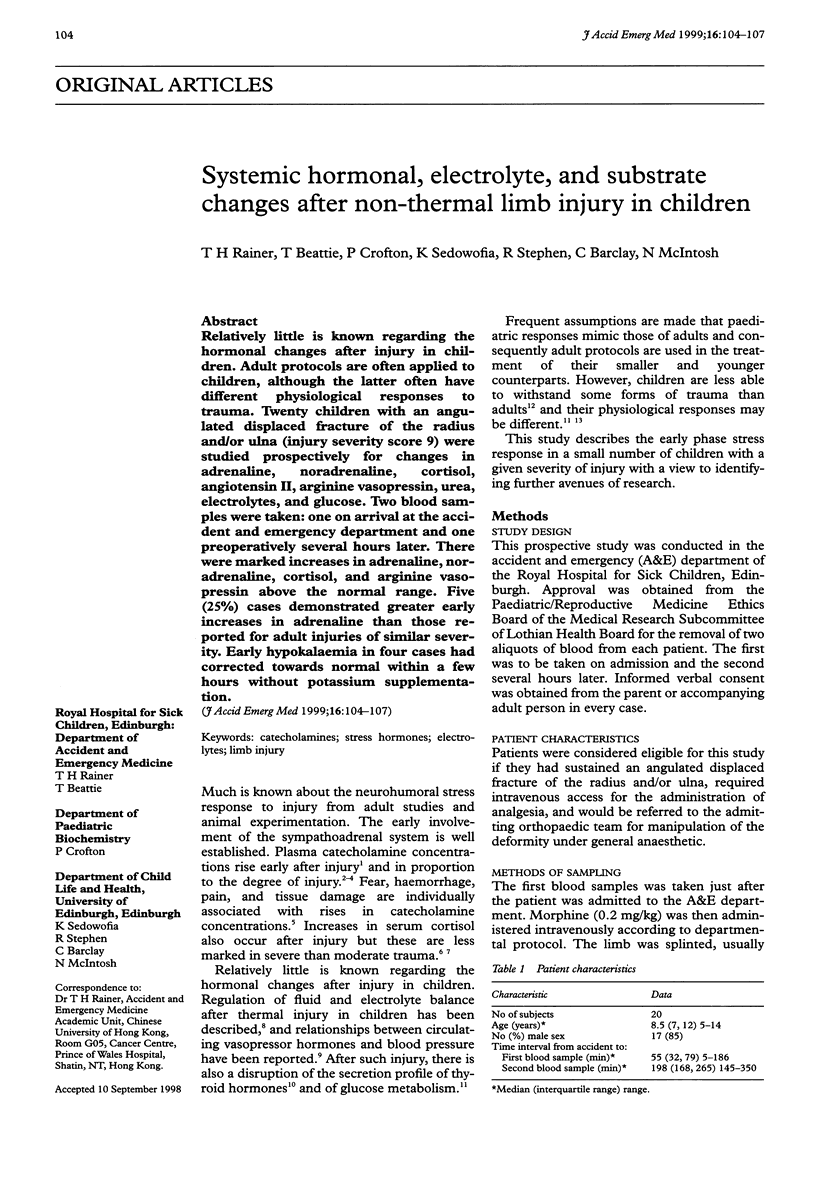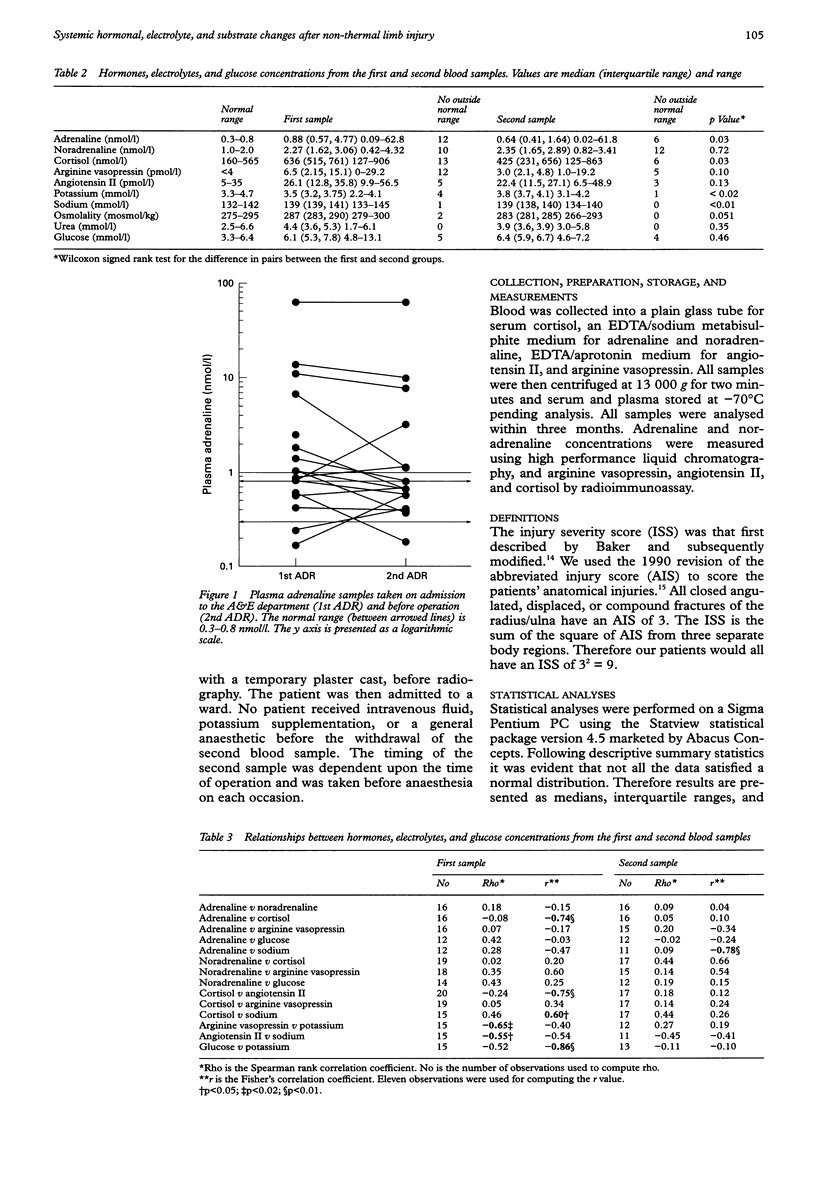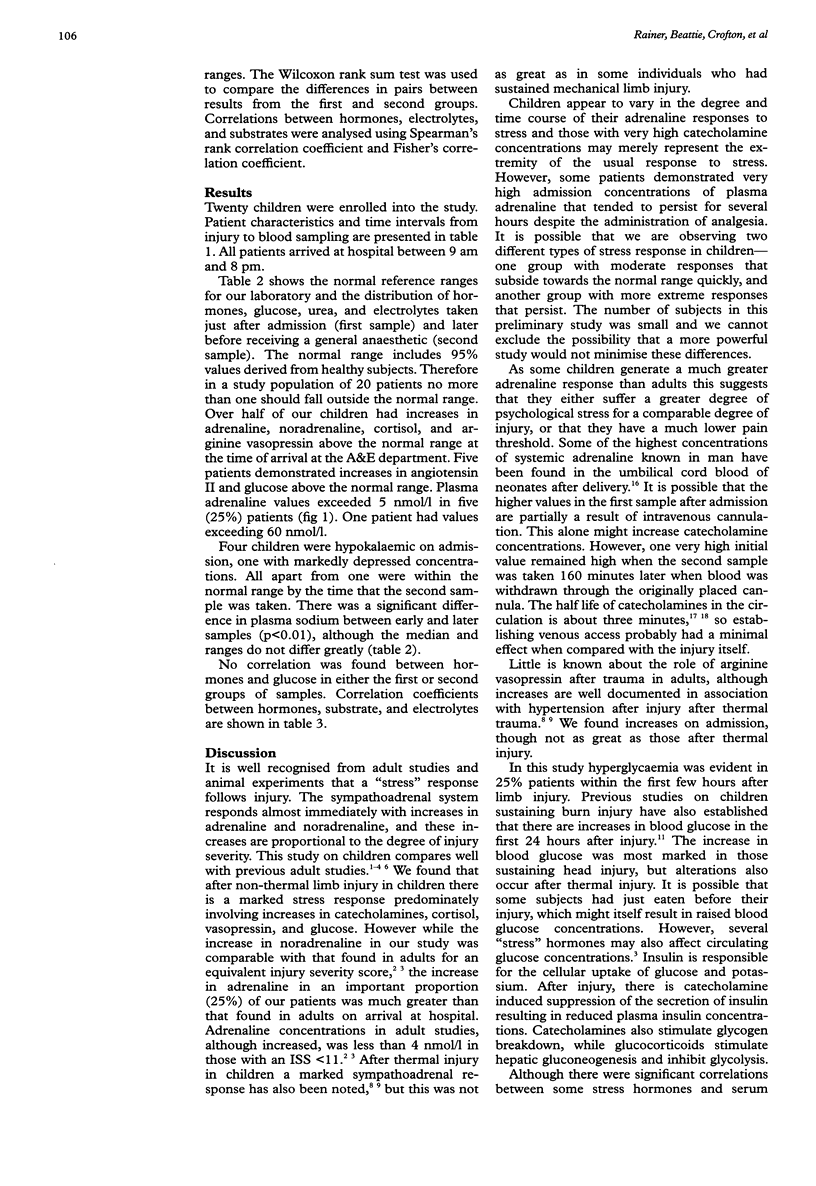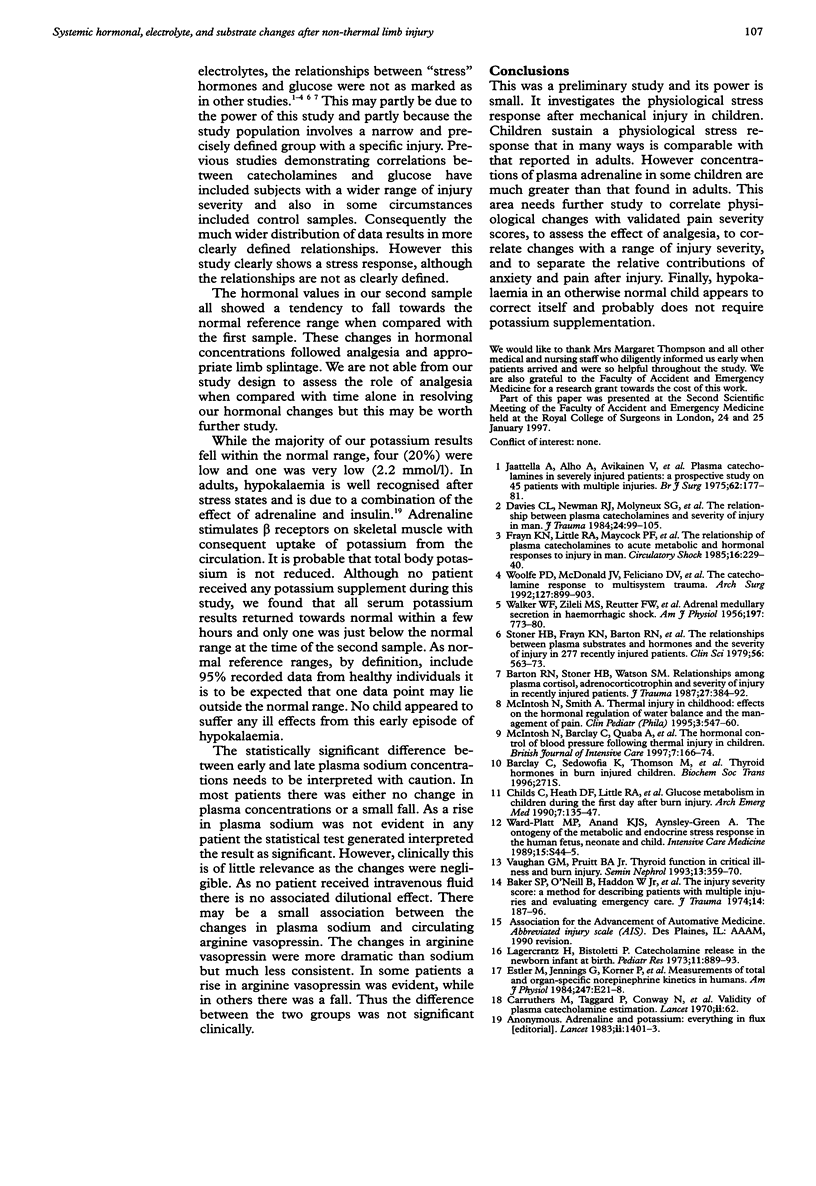Abstract
Relatively little is known regarding the hormonal changes after injury in children. Adult protocols are often applied to children, although the latter often have different physiological responses to trauma. Twenty children with an angulated displaced fracture of the radius and/or ulna (injury severity score 9) were studied prospectively for changes in adrenaline, noradrenaline, cortisol, angiotensin II, arginine vasopressin, urea, electrolytes, and glucose. Two blood samples were taken: one an arrival at the accident and emergency department and one preoperatively several hours later. There were marked increases in adrenaline, noradrenaline, cortisol, and arginine vasopressin above the normal range. Five (25%) cases demonstrated greater early increases in adrenaline than those reported for adult injuries of similar severity. Early hypokalaemia in four cases had corrected towards normal within a few hours, without potassium supplementation.
Full text
PDF



Selected References
These references are in PubMed. This may not be the complete list of references from this article.
- Baker S. P., O'Neill B., Haddon W., Jr, Long W. B. The injury severity score: a method for describing patients with multiple injuries and evaluating emergency care. J Trauma. 1974 Mar;14(3):187–196. [PubMed] [Google Scholar]
- Barton R. N., Stoner H. B., Watson S. M. Relationships among plasma cortisol, adrenocorticotrophin, and severity of injury in recently injured patients. J Trauma. 1987 Apr;27(4):384–392. doi: 10.1097/00005373-198704000-00007. [DOI] [PubMed] [Google Scholar]
- Carruthers M., Conway N., Somerville W., Taggart P., Bates D. Validity of plasma-catecholamine estimations. Lancet. 1970 Jul 11;1(7663):62–67. doi: 10.1016/s0140-6736(70)92638-3. [DOI] [PubMed] [Google Scholar]
- Childs C., Heath D. F., Little R. A., Brotherston M. Glucose metabolism in children during the first day after burn injury. Arch Emerg Med. 1990 Sep;7(3):135–147. doi: 10.1136/emj.7.3.135. [DOI] [PMC free article] [PubMed] [Google Scholar]
- Davies C. L., Newman R. J., Molyneux S. G., Grahame-Smith D. G. The relationship between plasma catecholamines and severity of injury in man. J Trauma. 1984 Feb;24(2):99–105. doi: 10.1097/00005373-198402000-00002. [DOI] [PubMed] [Google Scholar]
- Esler M., Jennings G., Korner P., Blombery P., Sacharias N., Leonard P. Measurement of total and organ-specific norepinephrine kinetics in humans. Am J Physiol. 1984 Jul;247(1 Pt 1):E21–E28. doi: 10.1152/ajpendo.1984.247.1.E21. [DOI] [PubMed] [Google Scholar]
- Frayn K. N., Little R. A., Maycock P. F., Stoner H. B. The relationship of plasma catecholamines to acute metabolic and hormonal responses to injury in man. Circ Shock. 1985;16(3):229–240. [PubMed] [Google Scholar]
- Jättelä A., Alho A., Avikainen V., Karaharju E., Kataja J., Lahdensuu M., Lepistö P., Rokkanen P., Tervo T. Plasma catecholamines in severely injured patients: a prospective study on 45 patients with multiple injuries. Br J Surg. 1975 Mar;62(3):177–181. doi: 10.1002/bjs.1800620303. [DOI] [PubMed] [Google Scholar]
- Lagercrantz H., Bistoletti P. Catecholamine release in the newborn infant at birth. Pediatr Res. 1977 Aug;11(8):889–893. doi: 10.1203/00006450-197708000-00007. [DOI] [PubMed] [Google Scholar]
- Platt M. P., Anand K. J., Aynsley-Green A. The ontogeny of the metabolic and endocrine stress response in the human fetus, neonate and child. Intensive Care Med. 1989;15 (Suppl 1):S44–S45. doi: 10.1007/BF00260885. [DOI] [PubMed] [Google Scholar]
- Stoner H. B., Frayn K. N., Barton R. N., Threlfall C. J., Little R. A. The relationships between plasma substrates and hormones and the severity of injury in 277 recently injured patients. Clin Sci (Lond) 1979 Jan;56(6):563–573. doi: 10.1042/cs0560563. [DOI] [PubMed] [Google Scholar]
- Vaughan G. M., Pruitt B. A., Jr Thyroid function in critical illness and burn injury. Semin Nephrol. 1993 Jul;13(4):359–370. [PubMed] [Google Scholar]
- Woolf P. D., McDonald J. V., Feliciano D. V., Kelly M. M., Nichols D., Cox C. The catecholamine response to multisystem trauma. Arch Surg. 1992 Aug;127(8):899–903. doi: 10.1001/archsurg.1992.01420080033005. [DOI] [PubMed] [Google Scholar]


